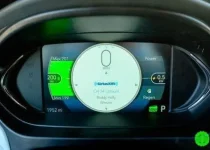What are the key factors influencing consumer adoption of electric vehicles?

Several key factors influence consumer adoption of electric vehicles (EVs). Understanding these factors can help industry stakeholders and policymakers address barriers and encourage the transition to electric transportation. Key factors include:
- Vehicle cost: The upfront cost of EVs has been one of the main barriers to widespread adoption. However, prices have been decreasing as battery technology improves and economies of scale are achieved. Government incentives, such as tax credits and rebates, can also help offset the initial cost and make EVs more affordable for consumers.
- Driving range: Range anxiety, or the concern of running out of battery power before reaching a charging station, has been a significant factor in consumer hesitancy. Advances in battery technology have led to EVs with longer ranges, and further improvements are expected to continue, alleviating this concern.
- Charging infrastructure: The availability and accessibility of charging infrastructure play a crucial role in consumer adoption. Expanding charging networks, particularly fast-charging stations, makes long-distance travel more convenient and helps reduce range anxiety.
- Charging time: The time it takes to recharge an EV is another factor affecting adoption. While charging times have decreased with the development of fast-charging technology, they are still generally longer than refueling an internal combustion engine (ICE) vehicle. Continued innovation in charging technology is needed to further reduce charging times.
- Vehicle choice: Offering a wide variety of EV models, including different sizes, styles, and price points, can help meet diverse consumer needs and preferences. As more automakers introduce electric versions of popular models and new electric-only models, consumers will have more options to choose from, increasing the likelihood of adoption.
- Performance and reliability: Many consumers are concerned about the performance and reliability of EVs compared to traditional ICE vehicles. To address these concerns, automakers need to demonstrate that EVs can provide equivalent or superior performance, such as acceleration, handling, and durability.
- Consumer awareness and education: Many consumers lack knowledge about the benefits and capabilities of EVs. Increasing consumer awareness and understanding through targeted marketing campaigns, educational programs, and test-drive opportunities can help dispel misconceptions and build confidence in EV technology.
- Government policies and incentives: Policies and incentives play a significant role in promoting EV adoption. These can include tax credits, rebates, reduced registration fees, access to high-occupancy vehicle (HOV) lanes, and support for charging infrastructure development.
- Environmental concerns: Growing awareness of the environmental impact of ICE vehicles and the potential benefits of EVs can influence consumer adoption. As consumers become more concerned about climate change, air pollution, and resource depletion, the demand for cleaner transportation options, such as EVs, is likely to increase.
- Total cost of ownership: Many consumers are not aware that the total cost of ownership (TCO) for EVs can be lower than for ICE vehicles due to reduced fuel and maintenance costs. Increasing awareness of the potential long-term savings associated with EV ownership can help sway consumers toward adopting electric vehicles.
By addressing these factors and continuing to improve electric vehicle technology and infrastructure, consumer adoption of EVs is expected to grow in the coming years.


